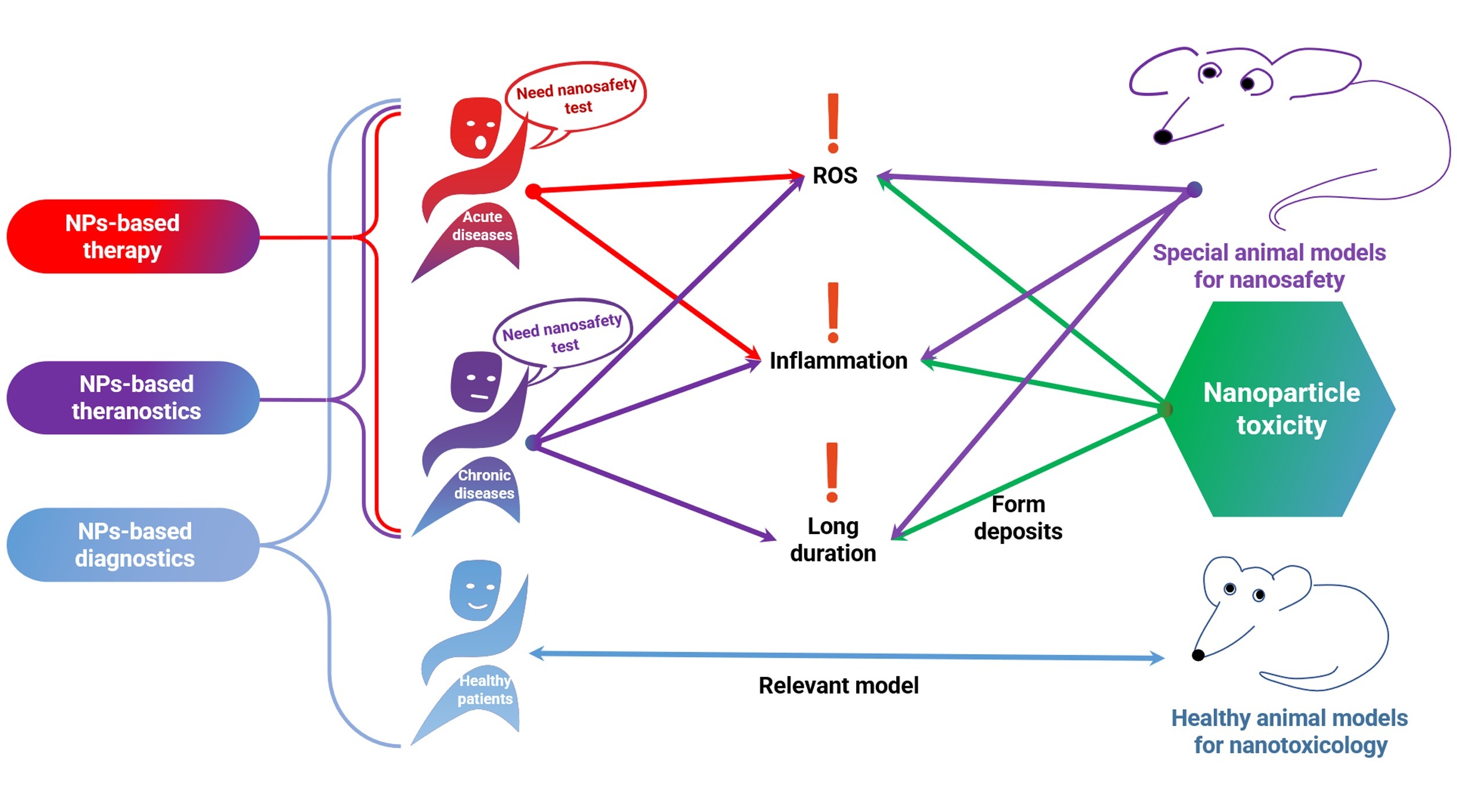Authors: Chrishtop V.V., Prilepskii A.Y., Varvara G.Nikonorova, Vladimir A.Mironov

Abstract
Nanotoxicological studies using existing models of normal cells and animals often encounter a paradox: retention of nanoparticles in intracellular compartments for a long time is not accompanied by any significant toxicological effects. Can we expect that the revealed changes will be not harmful after translation to practice, outside of a sterile laboratory and ideally healthy organisms? Age-associated and pathological processes can affect target organs, metabolism, and detoxification in the mononuclear phagocyte system organs and change biodistribution routes, thus making the use of nanomaterial not safe. The potential solution to this issue can be testing the toxic properties of nanoparticles in animal models with chronic diseases. However, current studies of nanotoxicity in animal models with a brain, cardiovascular system, liver, digestive tract, reproductive system, and skin diseases are unsystematic. Even though these studies demonstrate the emergence of new toxic effects that are not present in healthy animals. In this regard, we set the goal of this review as the formulation of the requirements for an animal model capable of assessing the potential toxicity of nanoparticles based on the nanosafety approach.
Read full: